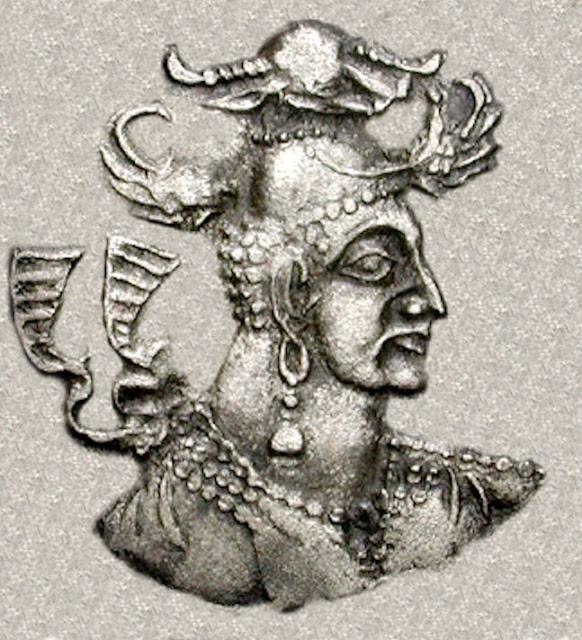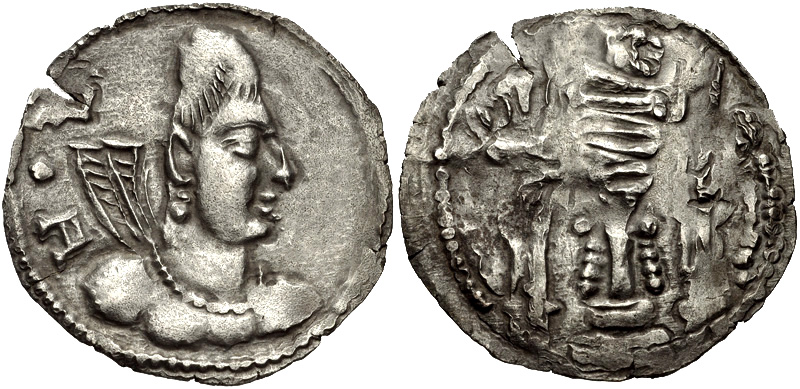Cyrene (in Greek North Africa) drachm coin 520-480 BCE
"The coin’s design is one of the few surviving images of a heart shaped seedpod of the extinct silphium plant.
The heart shape (♥) is an ideograph used to express the idea of the
‘heart’ in its metaphorical or symbolic sense as the center of emotion,
including affection and love, especially romantic love. Far from
resembling an anatomical heart, how did this popular symbol get its
shape? The stylized, symmetrical heart symbols we see today date back to
at least the 6th century BC, in the ancient Greek colony of Cyrene,
North Africa.
They are in fact seeds or pods from an extinct
plant known as silphium. Silphium was not just any ordinary plant. The
seeds were in high demand in the ancient world and were worth their
weight in silver. The little ‘heart shaped’ seeds were prized for their
effectiveness as a contraceptive, supplying the entire Mediterranean
world and thus connected with sexuality and love. The plant was
extremely difficult to domesticate and grew in only in a few locations
in North Africa. The ancient coastal city of Cyrene was very well known
for growing local silphium and many of the city’s coins boasted images
of this prized plant’s seeds. The plant is now extinct and has been
since the 2nd-3rd century BC, likely from over-harvesting."
-taken from thegreekdesigners link below
 |
| Cyrene (in Greek North Africa) drachm coin 520-480 BC. |
Source/Quote:
https://thegreekdesigners.com/2018/02/14/hearts-of-cyrene/


Comments
Post a Comment